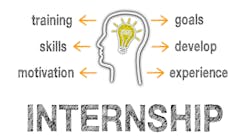There is an old Indian parable about an elephant and six blind men. As the story unfolds, each of the blind men have felt a different part of the elephant and said it was something different. One of them described the elephant as a wall, another as a tree; the others said it was a spear, a fan, a rope and a snake. They could not agree on what the elephant was as a whole because individually they could not see the entire elephant, only the parts of the elephant they touched.
In many ways, not sharing information with our line level employees has the same result. If you don’t see the entire picture, your decisions about it cannot be good.
Total Cost Picture
The big picture for many warehouses and DCs is the total cost of ownership (TCO), also referred to as total landed costs. The calculation of total cost of ownership (TCO) first emerged in the 1950s when experts such as Don Bowersox challenged conventional approaches to understanding the costs associated with logistics.1 He and a few colleagues believed that warehousing professionals needed to understand the total cost of a shipment—not just the warehousing and transportation costs.
Examples of costs you should include are hard costs, such as labor and assets; soft costs such as overhead; governance costs if you contract for services (i.e. cost to manage the relationship); software costs; supply chain support costs; retirement and disposal costs; opportunity costs; and the list goes on. With the number of inputs needed to calculate TCO, it’s no wonder many companies find it challenging. And to increase the fun, finding the right component to optimize and improve costs is just as daunting.
Feed Employees Metrics
A great place to start is focusing on the information we are feeding our front line employees. A recent study titled “Pursuit of Performance Excellence: Business Success through Effective Plant Operations Metrics,” by the Manufacturing Enterprise Solutions Association (www.mesa.org) revealed companies who share key metrics information with their front line employees are able to take almost immediate action to correct an issue. Unfortunately the report, even among the leaders in the study (called Business Movers), only a handful are providing the key information all of the time.
The study underscores the need to provide frequent and timely performance information to empower employees for success. In order to drive bottom line results from the shop floor up, we need to have a measurement process and culture.
Brightest Ideas on the Line
The one constant we have in our warehouses and DCs are our front line employees. These are the guys and gals with the most knowledge of processes and products. As we look for ways to drive improvements that affect the bottom line, employees can have the most effect on other components of TCO. That’s why the best place to search for the brightest ideas to fix processes and to find ways to reduce costs is the front line.
Some companies have this process figured out, while others are still maturing. A recent Wall Street Journal article titled “For Bright Ideas, Ask the Staff,” details the efforts firms are going through to receive feedback from their employees.
PricewaterhouseCoopers (www.pwc.com), the accounting and consulting firm, launched a website called iPlace for employees to submit ideas for ways to reduce costs, improve customer service and generate more revenue. These ideas are open for colleagues to review, comment on and even to vote on as which are the best. After 30 days a team of senior managers reviews each idea and notifies the submitting employee of its status. Since the program’s inception, more than 3,300 ideas have been submitted and 140 have been implemented.
Troyer Foods, Inc. (www.troyers.com) is another example. This wholesale food distributor based in Indiana implemented an online system to gather ideas. Employees who submit ideas receive points, which can be redeemed for merchandise and other perks, such as a designated parking space. Troyer Foods CEO, Becky Ball-Miller, says the company wants submitting ideas to become “part of the job expectation and part of the performance review.”2
A great example of a warehouse involving their front line employees is Unipart Logistics (www.unipartlogistics.com), a third party logistics provider. Unipart Logistics has taken continuous improvement methodologies, such as Lean, and embedded their own measurement process and culture in their company. It’s called the Unipart Way. The Unipart Way guides everything the company does. Essentially, the company engages their employees, as part of their normal work routine, to find better ways to perform or improve work processes in their facilities. In addition, those employees are very involved with collecting and displaying line level metrics from their shift for everyone to see potential issues and to take corrective steps.
The goal is to embed a measurement process and culture in your organization. Having a measurement process in place ensures frequent, constructive reviews of the metrics. This enables individuals, teams, and units to make timely course corrections. When used properly, measurement and the information it provides can become the basis of communication between manager and the front line employees.
A Simple Five-Step Method
Creating a measurement process and culture is easier said than done, but following a few simple rules can help. The key is to show workers how their performance affects the overall business, then work with them to facilitate the selection and implementation of the measures. We call this five-step process Validating the Value Add or VVA for short. VVA is establishing metrics that support the overall corporate objectives and goals. This is accomplished by linking accountability to achieve goals to where the work gets done. When used properly, VVA can create an environment where people use the metrics to drive positive change in the business.
Step 1: Clearly define the company’s objectives
Companies need to determine their desired outcomes and strategy. Then articulate the desired outcome and strategy such as “I want to achieve a ten percent improvement in shipping accurate orders.” Make sure to link operational and functional tactics back to the overall strategy. Follow up with your people to make sure they understand the strategy and what their role is in helping to achieve that strategy.
Step 2: Develop the value-add statement
Create value-add statements that are under your team’s or department’s control. Essentially, how does the team or department add value in achieving the company’s desired outcomes? Be sure to have a measurable performance goal. For example, “Our team adds value by maintaining 99.42% or better accuracy on order picking.”
Step 3: Measure the progress against VVA
Once clear expectations have been set, measure the team or department’s progress against their goal. Make it easy to see that goals are indeed being met by summarizing data so the results are obvious. Also, be sure to include historical data to track trends. Step 3’s focus is for employees to easily understand and track their performance against the company’s desired outcome.
Be sure to involve your employees in gathering the data and creating the visuals of their performance. By involving employees and making them the owners of this process, you create buy-in and a source of pride in the work they do.
Step 4: Chart reasons for not meeting the goal
Create a process for root cause analysis and develop corrective action plans. For example, create a Pareto chart (80/20) to show where to focus efforts. The obvious problem is usually not the root cause, and to keep the problem from recurring, the team must drill-down to find the underlying reasons for the problem. A good technique is to ask “Why?” five times.
Step 5: Take action—Fix the problem
This is where results begin. By outlining the steps you are taking to correct problems that have been identified in Step 4 you mitigate emotions and finger pointing.
Taking action validates the entire process. The best case: you’ll drive change to improve performance. The worst case: by doing nothing all of the work done to this point will mean nothing—and the company’s time and assets will have been wasted.
Joseph Tillman is senior researcher at Supply Chain Visions, Ltd. (www.scvisions.com).



